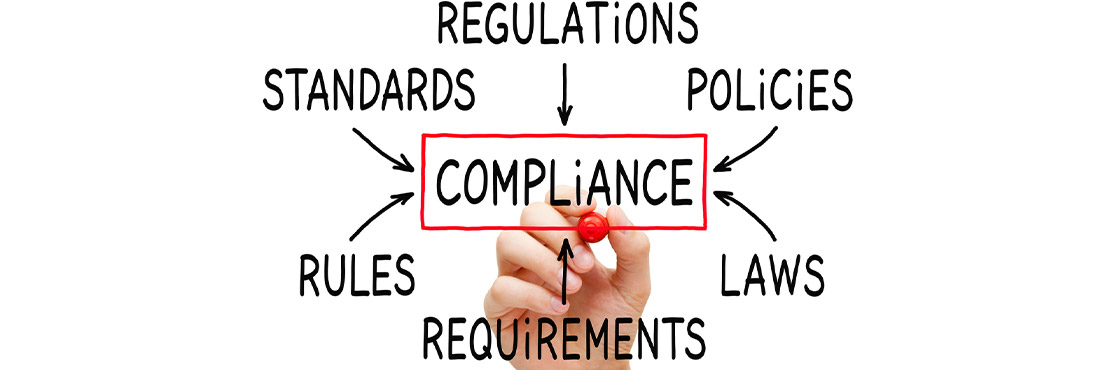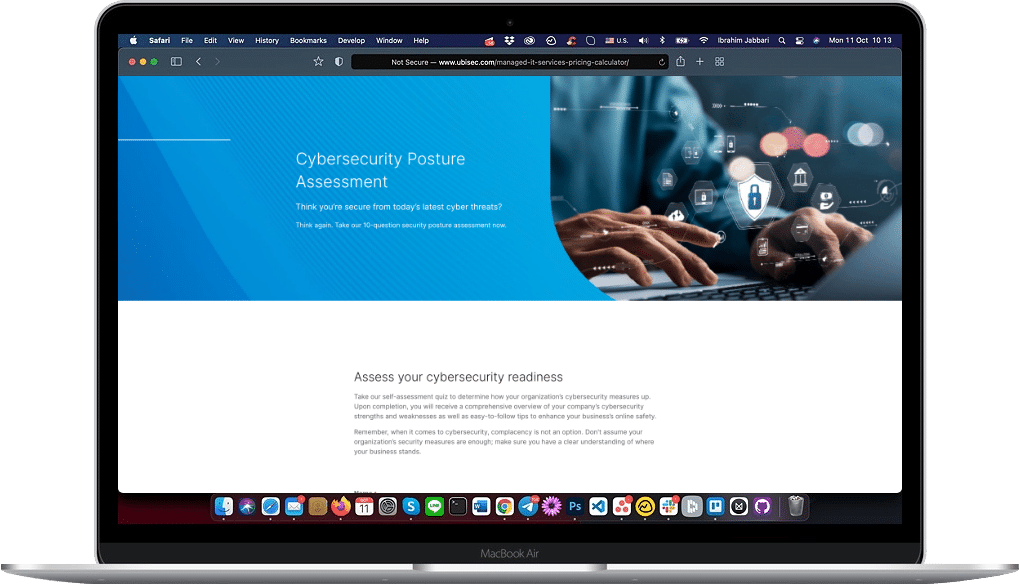Navigating the labyrinthine realm of cybersecurity can be a daunting task, especially for organizations grappling with the intricacies of regulatory compliance. In today’s data-driven world, where sensitive information is the lifeblood of businesses, adhering to established cybersecurity regulations is not merely an option but a necessity. These regulations, meticulously crafted by regulatory bodies and industry experts, serve as a bulwark against the ever-evolving menace of cyber threats.
Delving into the intricacies of cybersecurity regulatory compliance, let’s uncover the fundamental principles that underpin this crucial aspect of digital security.

Understanding IT Consulting in Orange County
Regulatory compliance means sticking to laws and policies made to protect computer systems and data from various dangers like cyber threats, breaches, and unauthorized access. Basically, it’s a really important part of how businesses operate in today’s digital age.
Different industries have organizations that make sure everyone follows these rules. They have the power to check if companies are doing things right through inspections and audits. The Federal Trade Commission (FTC) is one such organization, and they can even take legal action against companies that don’t meet data security standards. These regulatory groups also create frameworks and criteria to guide organizations through the complicated world of cybersecurity. For example, the National Institute of Standards and Technology (NIST) has a framework that’s like a fundamental tool to make sure critical infrastructure has strong cybersecurity measures in place. It’s like a guidebook to help companies navigate the complex rules and keep their digital systems safe.
Have you taken our quick and easy cybersecurity assessment quiz? Click here to learn more.

Key Cybersecurity Regulations to Know
General Data Protection Regulation (GDPR)
The GDPR is a comprehensive regulation with universal applicability to companies handling the personal data of EU residents. Envisioned to unify data privacy laws throughout Europe, failure to comply may result in penalties amounting to 4% of the company’s annual global turnover or €20 million.
Health Insurance Portability and Accountability Act (HIPAA)
California Consumer Privacy Act (CCPA)
CCPA, a stringent guardian of Californian consumer privacy, applies to businesses collecting personal data with annual gross revenue exceeding $25 million. Non-compliance could lead to civil penalties reaching $7,500 per deliberate violation.
Payment Card Industry Data Security Standard (PCI DSS)
PCI DSS, the custodian of credit card data, imposes compliance obligations on entities handling credit card information. Non-compliance attracts fines ranging from $5,000 to $100,000 per month.
Federal Information Security Management Act (FISMA)
FISMA, a directive for U.S. federal agencies and their associates, mandates developing and implementing an information security system. Non-compliance can result in the loss of federal funding or contracts.

Strategies for Achieving and Maintaining Compliance
Understand the Regulatory Requirements
Before embarking on the journey to compliance, a meticulous comprehension of industry-specific regulatory requirements is imperative. Distinct sectors invariably harbor particular standards and regulations.
Implement a Culture of Security
Elevate cybersecurity from a mere IT responsibility to an organizational ethos. Cultivate a pervasive culture of security through periodic training and awareness programs.
Regular Risk Assessments
Conduct systematic risk assessments to unearth vulnerabilities within the system. Evaluate existing security measures, identify potential threats, and fortify the security framework accordingly.
Develop and Enforce Policies and Procedures
The bedrock of compliance lies in formulating and enforcing unequivocal policies and procedures. These should encompass password management, data handling, incident reporting, and demand periodic review and updates in response to regulatory changes or technological advancements.
Implement Strong Access Controls
Mitigate unauthorized access to sensitive information through the implementation of robust access controls. Employ measures such as multi-factor authentication, stringent access rights based on roles, and periodic review and adjustment of access permissions.
Regular Audits and Reviews
Sustain compliance through systematic audits and reviews, encompassing scrutiny of user access rights, analysis of security logs, and the execution of penetration tests to pinpoint potential vulnerabilities.
Incident Response Plan

Ensuring Cybersecurity Compliance for Business Continuity
In the digital era, cybersecurity compliance is crucial for safeguarding businesses. To fortify your digital infrastructure and ensure business continuity, your organization must systematically assess operations and implement robust measures to mitigate the risks of cyber breaches.
Business Continuity:
Maintaining seamless operations in the face of a cyber breach is paramount for any organization. Businesses should establish comprehensive continuity plans that outline procedures they should follow in the event of an incident. This includes regular backups of critical data, secure data storage, and the creation of redundancies in crucial systems. Organizations can minimize downtime and swiftly recover from cyberattacks by anticipating potential disruptions.
Business Impact:
Understanding the potential impact of a cyber breach is essential for effective cybersecurity compliance. Organizations must conduct thorough risk assessments to identify vulnerabilities and quantify a security incident’s possible financial and reputational repercussions. This proactive approach enables businesses to allocate resources efficiently, prioritizing cybersecurity measures based on their impact on critical operations.
Business Operations:
Integrating cybersecurity measures seamlessly into daily operations is vital to compliance. These critical measures involve fostering a cybersecurity-aware culture among employees, implementing regular training programs, and employing technologies that detect and respond to threats in real time. By embedding cybersecurity practices into business operations, organizations create a resilient environment that can withstand and swiftly recover from cyber threats.

Navigating Cybersecurity Risks
Cybersecurity Risks:
Think of cybersecurity risks as online threats, such as malware, phishing attacks, or data breaches. By understanding these risks, businesses can create customized strategies to protect against specific vulnerabilities and potential weaknesses.
Risk Analysis Process:
When discussing the risk analysis process, we refer to a structured way for organizations to determine, assess, and prioritize potential threats. It’s like creating a game plan to understand how likely different risks are and what kind of impact they could have. This process helps organizations identify weak points and implement targeted security measures.
Risk Assessments:
Regular risk assessments are like a check-up for a business’s online security. Organizations must look at their current safety measures, find out where they might be vulnerable, and stay updated on new threats. By doing this regularly, businesses can adjust their security plans to keep up with changes in the online world and ensure they’re always ready to face potential cyber threats.
Are you ready to protect your organization from a cyber-attack? Click here to watch our webinar!
Conclusion
As we conclude this exploration into cybersecurity regulatory compliance, remember that safeguarding your digital assets is an ongoing commitment. Your organization can meet and exceed regulatory standards by understanding, implementing, and continually refining the outlined strategies.
In an age where data breaches loom as potential threats, proactive measures are paramount. Ubisec Systems stands ready to partner in this journey, offering tailored solutions to elevate your cybersecurity posture. Secure your digital future today and let Ubisec Systems be your ally in the ever-evolving cybersecurity landscape.
Embark on this journey with confidence, fortified by knowledge and supported by a dedicated ally in Ubisec Systems. Click here to get started!
FAQ
It is the adherence to laws, policies, and regulations safeguarding systems and data from threats, breaches, and unauthorized access.
The regulatory framework is indispensable in establishing standards and ensuring organizations undertake requisite measures to protect sensitive information.
Primary responsibilities include:
- A comprehensive understanding of regulatory requirements.
- Instilling a security culture.
- Conducting periodic risk assessments.
- Enforcing policies.
- Implementing access controls.
- Maintaining a robust incident response plan.
Ensuring compliance involves:
- Understanding regulatory requirements
- Fostering a security culture
- Conducting regular risk assessments
- Enforcing policies
- Implementing strong access controls
- Conducting systematic audits
- Maintaining a robust incident response plan










